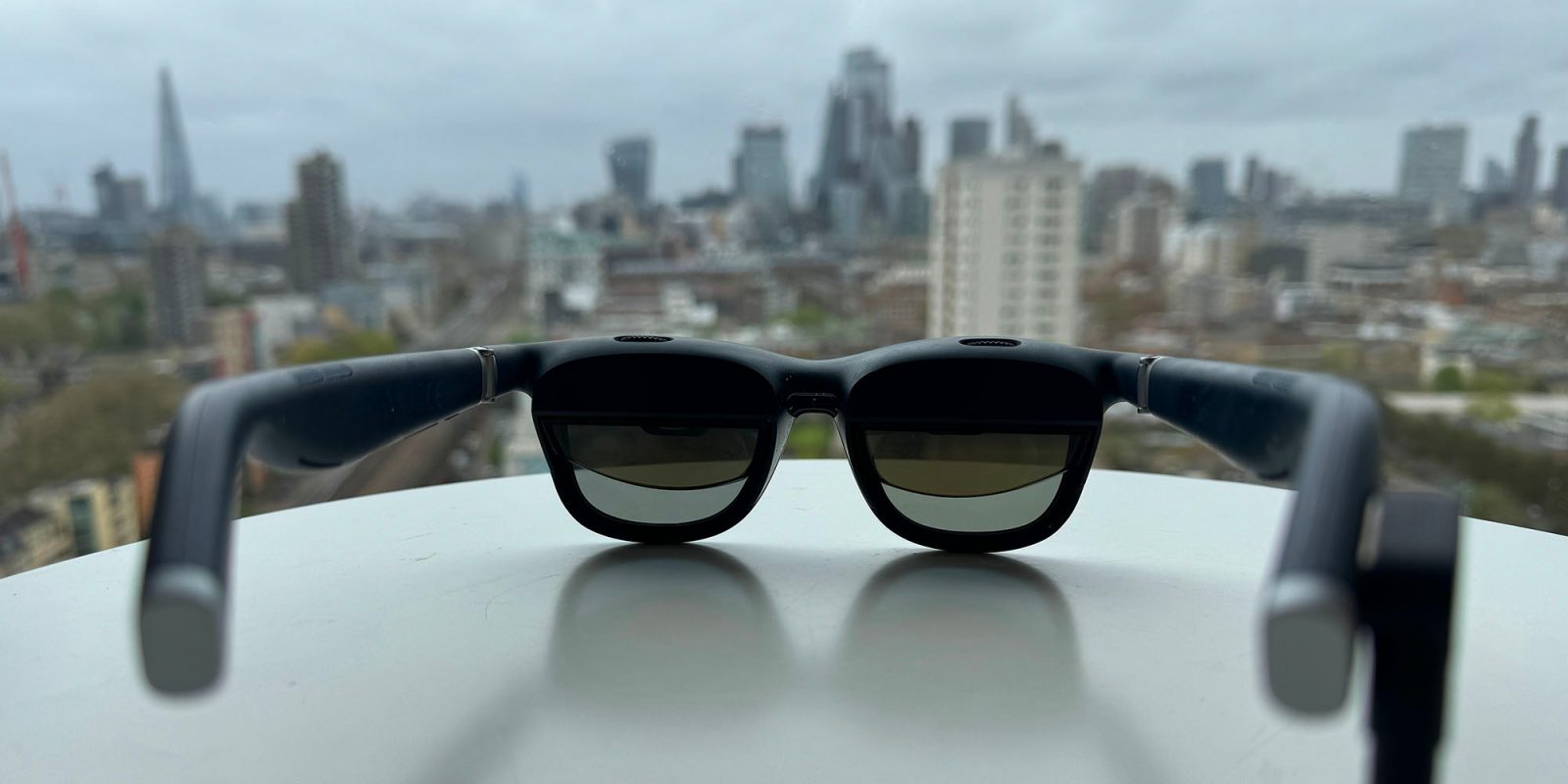
One of Vision Pro’s most exciting capabilities, to me personally, is the ability to display multiple Mac monitors in virtual form. Viture One XR glasses have now gained that same capability.
When I first tested the glasses, I noted that while they could act as a Mac monitor, they were limited to a single monitor – this this has now changed …
Vision Pro versus Viture One XR
As I outlined previously, the two devices are very different beasts. Vision Pro is a spatial computer, capable of running its own apps; Viture is an external monitor in glasses format. Vision Pro has a resolution of more than 4K per eye, and a wide field of view; Viture is 1080p per eye, and a much narrower FOV.
On the other hand, Vision Pro costs upwards of $3,500, while Viture comes in at $439 – and still manages to (now) tick five of the same boxes:
- Viewing movies
- Playing games
- Viewing 3D video
- Viewing Spatial Video
- Using multiple Mac monitors in virtual form
It’s also massively lighter and more comfortable, and is powered by the connected device (iPhone or Mac), so has much longer effective battery life.
Multiple Mac monitors
Creating virtualized multiple Mac monitors on Viture requires running a Mac app called SpaceWalker. This is effectively just a utility for launching and managing the monitors.
You can choose between a variety of layouts – single screen, dual screen, ultrawide screen, and Horizon mode. The latter allows three side-by-side monitors (or you can stack them vertically, if you prefer).
This would, in principle, allow me to replicate the three-screen mobile office setup I use when working away from home. That relies on three physical screens: my 16-inch MacBook Pro, an external 15-inch portable monitor, and my 12.9-inch iPad.
The physical setup works well, but has a couple of drawbacks. First, the external monitor is an extra device to carry – and a fragile one, which is always something of a concern when travelling. Additionally, when I’m sharing a holiday apartment, I need to set it up and put it away each day to avoid permanently commandeering a dining table.
In theory, a three-monitor setup in my Viture glasses would give me the same screen layout using nothing more than my Mac and the glasses.
This is something my Meta Quest can do too, but that’s just too uncomfortable to use for work.
The good news
Setup is very easy. Open the SpaceWalker app on the Mac, connect the glasses, select the Horizon view – then open your apps and assign them to the virtual monitors as desired.
Switching view is as easy as turning your head to the left or right. You can also zoom in and out, using key combinations.
As a bonus, the MacBook screen remains blank by default, so you could even use the glasses to have a three-screen setup on a train or plane, without anyone being able to see your work.
Everything can still be controlled using the MacBook keyboard and trackpad, so it doesn’t require any additional hardware – though using a Magic Keyboard and Magic Trackpad while leaving the Mac off to one side would make for a neater setup.
The bad news
This is a first-gen feature, and the biggest issue I’ve found is that the positions of the monitors wander a little. Not apart from each other – they remain side by side – but within your field of view.
There’s a single keyboard shortcut for re-centering them, so just look forward, hit Shift-Option-CMD-R, and everything neatly centers itself. However, it does become a pain when you need to do this very frequently. I’d expect this to be improved in future software updates.
The other bad news for me personally – and maybe for some of you – is that while I can use the built-in diopter adjustment to use the glasses without contact lenses, my short-sightedness means I can’t quite properly see the physical keyboard of my Mac. (This is visible beneath the displays of the glasses when looking down.)
If I wear contact lenses, then the opposite problem arises: my long-sightedness means that the screen isn’t 100% clear! The joys of getting old …
Enough to intrigue me; not yet to convince
So far, then, I’ve been able to play with the system – including writing part of this piece on it, relying on what passes for my touch-typing – but not really get a full sense of how realistic it would be to use it as a serious mobile office setup.
However, I’m intrigued enough to want to find out!
My plan is to get some contact lenses with the same prescription as my reading glasses, which are designed for near vision at the expense of far. That would, I think, allow me to see both virtual displays and keyboard clearly. If that solves my vision problem, I can then give the setup a full-on test.
Video capture from the glasses is currently pretty tricky, so this is just a very rough look at the main options – and a demo of the zoom feature – created by the company. (I’m hoping they will offer an easier way to capture video in a future update.)
FTC: We use income earning auto affiliate links. More.

![Viture One glasses now support Vision Pro-like multiple Mac monitors in VR [Video] Viture One glasses now support Vision Pro-like multiple Mac monitors in VR [Video]](https://i0.wp.com/9to5mac.com/wp-content/uploads/sites/6/2024/04/Viture-One-glasses-multiple-Mac-monitors.jpg?resize=1200%2C628&quality=82&strip=all&ssl=1)

![[CITYPNG.COM]White Google Play PlayStore Logo – 1500×1500](https://startupnews.fyi/wp-content/uploads/2025/08/CITYPNG.COMWhite-Google-Play-PlayStore-Logo-1500x1500-1-630x630.png)